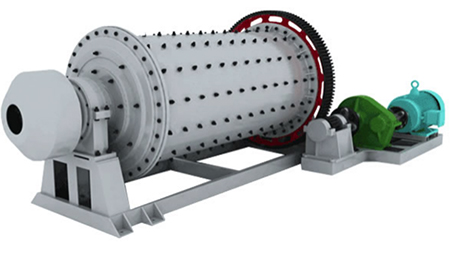What are the disadvantages of a ball mill?
Views: 662 Update Date:Jan 03 , 2024
A ball mill is a type of grinder used to grind and blend materials for use in mineral dressing processes, paints, pyrotechnics, ceramics, and selective laser sintering. While ball mills have several advantages, they also come with some disadvantages. Here are some common drawbacks associated with ball mills:
High energy consumption: Ball mills require a substantial amount of energy to operate. The grinding process can be energy-intensive, leading to high electricity costs.
Low efficiency: Ball mills often have a low efficiency in terms of the utilization of the input energy for reducing particle size. A significant portion of the energy is converted into heat, which may not contribute effectively to the size reduction process.
Large footprint: Ball mills, especially those used for large-scale industrial applications, can take up a significant amount of space in a processing plant. This can limit flexibility in plant layout and design.
Noise generation: The operation of ball mills can be noisy due to the tumbling and grinding of the materials. This noise can be a concern, especially in environments where noise levels need to be minimized.
Limited control over particle size distribution: Achieving a specific particle size distribution can be challenging in a ball mill. The size reduction is influenced by various factors, and obtaining a narrow particle size distribution may require additional processes or equipment.
Despite these disadvantages, ball mills remain widely used in various industries due to their versatility and effectiveness in grinding and blending materials.
Prev: How do grinding balls work?
Next: What are the three types of grinding media which are commonly us
High energy consumption: Ball mills require a substantial amount of energy to operate. The grinding process can be energy-intensive, leading to high electricity costs.
Low efficiency: Ball mills often have a low efficiency in terms of the utilization of the input energy for reducing particle size. A significant portion of the energy is converted into heat, which may not contribute effectively to the size reduction process.
Contamination of product: The grinding media used in ball mills can contaminate the final product with impurities from the grinding media itself or from the material being ground. This is a concern, particularly in industries where product purity is crucial, such as pharmaceuticals or food processing.

Large footprint: Ball mills, especially those used for large-scale industrial applications, can take up a significant amount of space in a processing plant. This can limit flexibility in plant layout and design.
Noise generation: The operation of ball mills can be noisy due to the tumbling and grinding of the materials. This noise can be a concern, especially in environments where noise levels need to be minimized.
Limited control over particle size distribution: Achieving a specific particle size distribution can be challenging in a ball mill. The size reduction is influenced by various factors, and obtaining a narrow particle size distribution may require additional processes or equipment.
Despite these disadvantages, ball mills remain widely used in various industries due to their versatility and effectiveness in grinding and blending materials.





